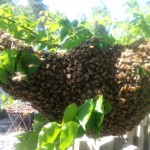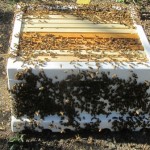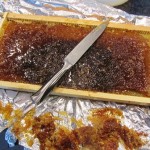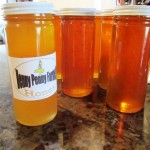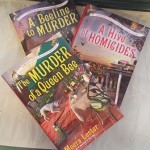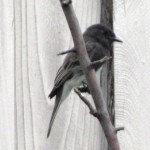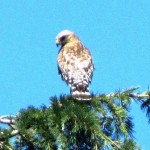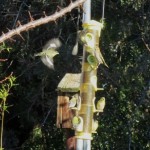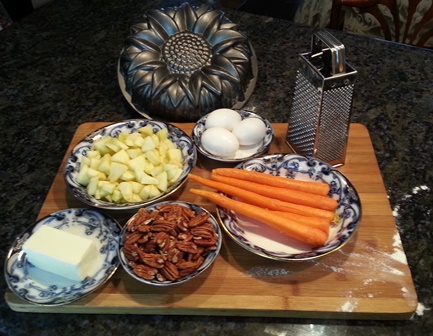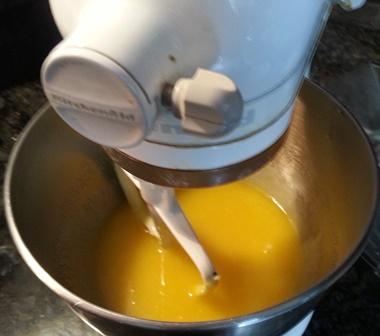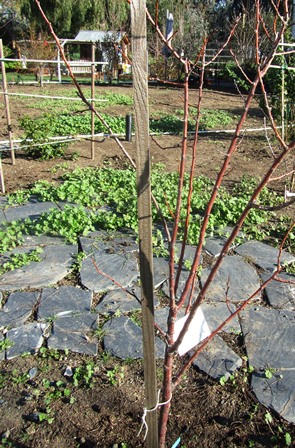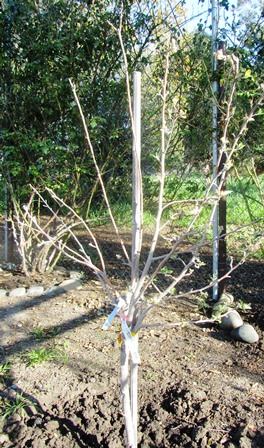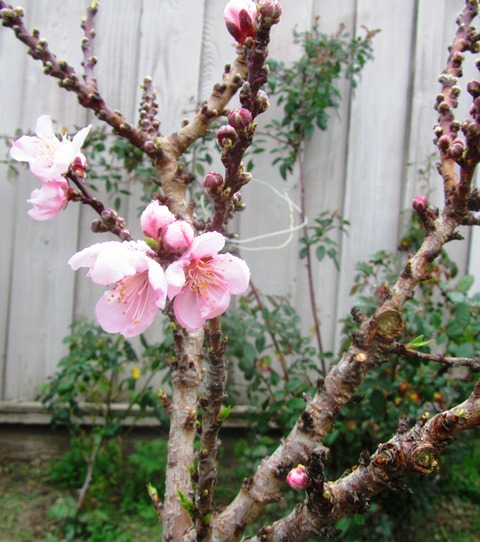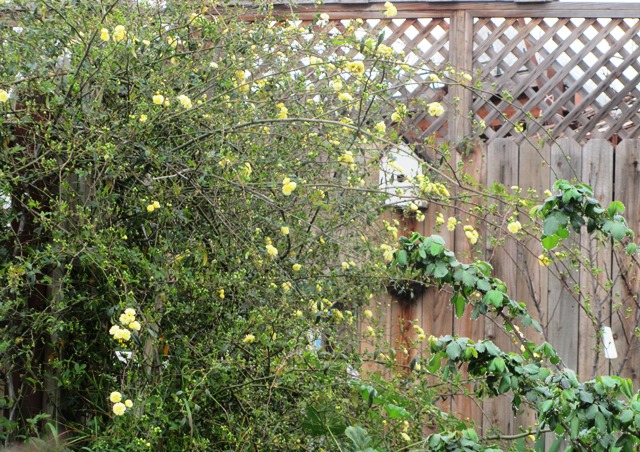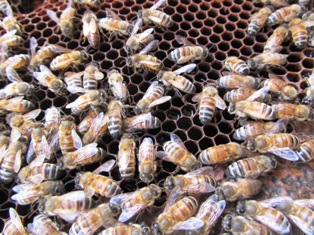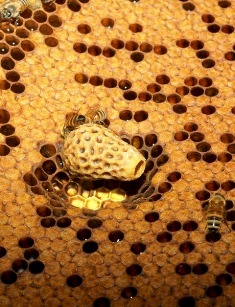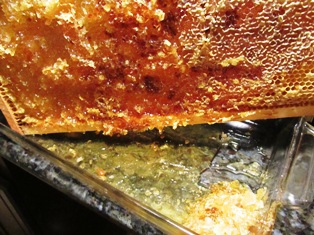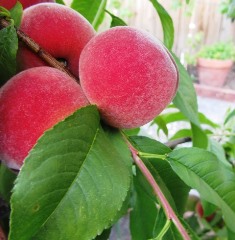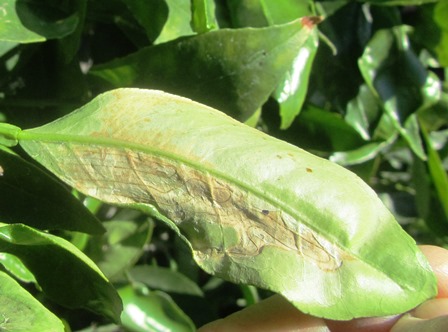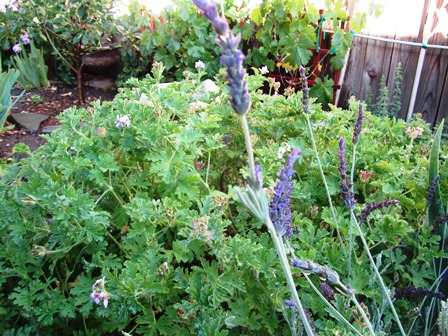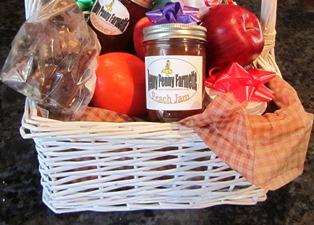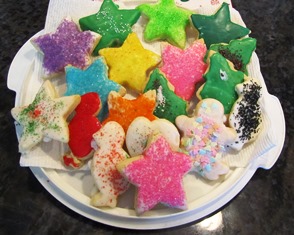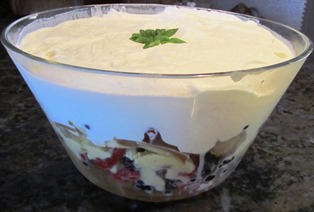September: Welcome to Apple Season
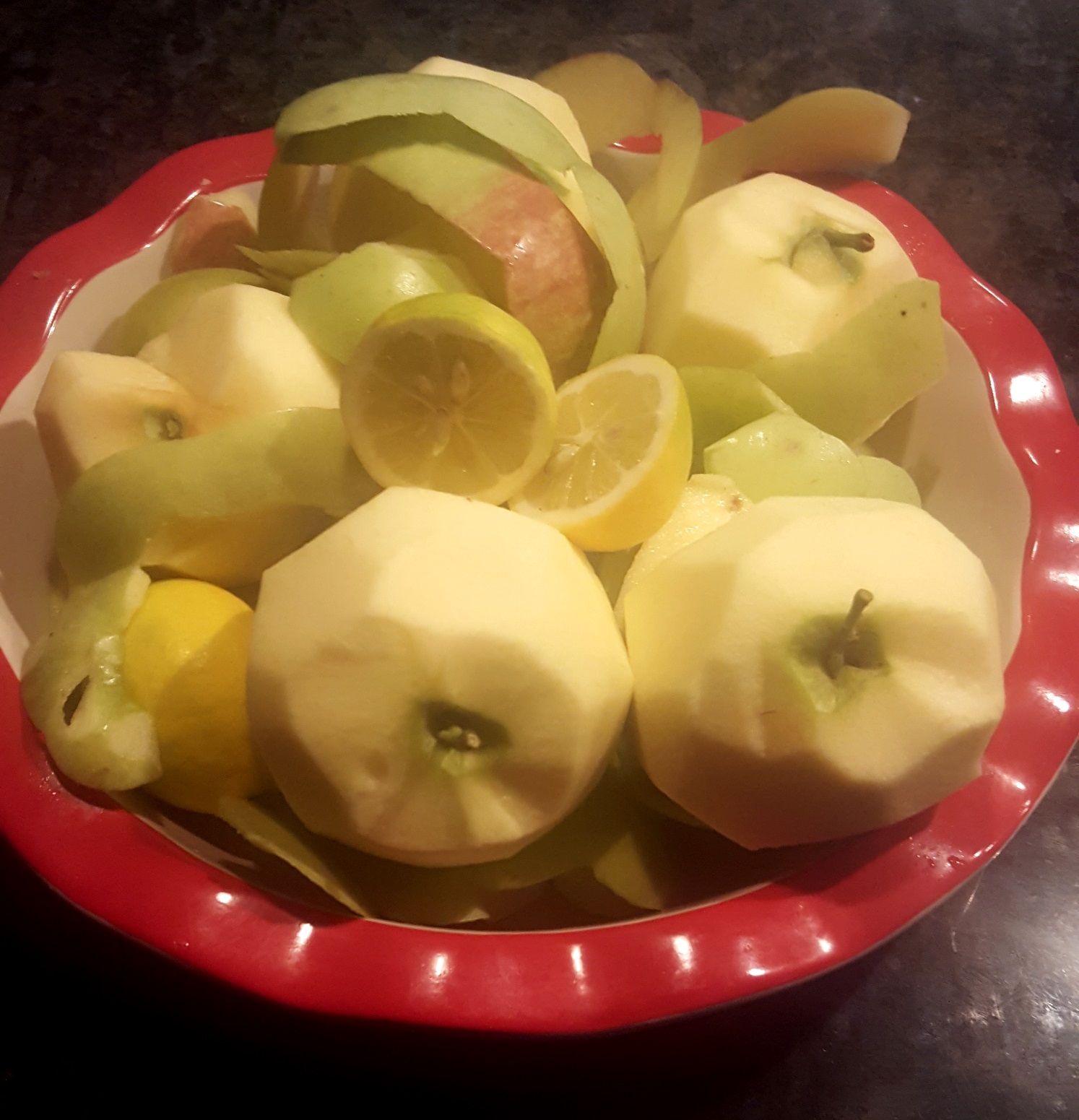
Apple season traditionally extends from Labor Day to Thanksgiving, depending on what part of the country you live in. That noted, some orchards have varietals of apples ripening prior to Labor Day. Some apples might be ripe by mid-summer while others need a longer season and come to harvest later in the fall. In Washington state as here in northern California, apple season runs from roughly from August to November.
In autumn, local orchards offering a “you-pick” option often close when the weather gets cold. But picking your own apples offers a great family outing and at a cost-savings. Think about the grower facing labor costs for picking, storing, and shipping the apples to market. Those costs can add up and some of it gets passed on to the consumer. Buying a few pounds or a bushel basket of apples that you pick yourself will save you some of your hard-earned cash.
I grew up on a farm in central Missouri but my grandparents did not have apple trees. In the fall, we would drive to a local orchard in the country near where we lived and pick bushel baskets of apples. My Grandma Rosie would turn the fruit into apple butter, applesauce and sliced apples preserved in a hot water canner for winter suppers. And don’t even get me started on her apple deserts that included cobbler, crisp, crumbles, cookies, fritters, pandowdy, and apple pie.
If you happen to have a pound of apples on hand for cooking or eating fresh, why not try making them into this simple apple fritter recipe for a breakfast (or anytime) treat?
Recipe for Country Apple Fritters
Ingredients:
1 pound apples
1 cup flour
1 pinch salt
1 egg
2/3 cup milk
oil for frying
granulated sugar for dusting fried fritters
Directions:
Whisk together the salt and flour in a large bowl. Make a well and add the egg. Drizzle in the milk and whisk to combine ingredients. Set aside the batter for about an hour while you prepare the apples.
Peel and core the apples. Cut into uniform-size rings no more than 1/2-inch thick. Heat enough oil to cook one or two rings at a time. When the oil is hot, use a skewer stick to hold the apple ring while you dip it into the batter. Fry each fritter to golden brown. Remove and drain on a paper towel and dust with sugar. Serve immediately.
Enjoy reading about farm topics? Check out my Henny Penny Farmette series of cozy mysteries. Chocked full of farm trivia and helpful advice for keeping chickens and bees and growing heirloom fruit and vegetables, all three novels are available online and in bookstores everywhere.

A Beeline to Murder–When the town’s celebrity pastry chef is found dead, Abby Mackenzie (a former cop who supplies the chef with her organic lavender honey) discovers the chef’s secret private life suggests the killer might be local.
The Murder of a Queen Bee–The botanical shop owner and friend of Abby Mackenzie doesn’t make it to a party where she’s the guest of honor. Her death leads Abby to speculate that friends of the deceased might be hiding her killer.
A Hive of Homicides–Abby attends a vow-renewal party of her best friend and is an ear witness to the murder of the newly arrived re-married couple. The husband’s philandering past establishes a pool of suspects but Abby is convinced that there’s more to the murder a scorned lover’s revenge.
Keeping Bees Feeds the Family
The sight of bees collecting pollen makes me happy. Always has. Honeybees are vital to the production of the foods we love such as almonds, apples, citrus, melons, and a large variety of vegetables. My vegetable garden and fruit trees are incredibly productive because of my backyard bees. I guess you could say they feed my family through pollination.
Bees are pollinators. Without them there’s a good chance we’d suffer food scarcity on our planet. Three out of four crops around the globe that are foods that we humans eat are dependent in large part on pollinators. Honeybees also produce honey, nature’s most delicious sweetener, in my opinion.
I keep hives of honeybees on my farmette. It’s not a commercial operation but a backyard hobby that supplies honey for my family and friends as well as pollinating a huge variety of vegetables, fruits, and berries that I grow. Caring for the bees is relatively easy. Harvesting honey, on the other hand, is a bit of work but work I am happy to do.
The first step in harvesting honey is to open the hives. The use of a smoker helps calm the bees. Working quickly is a good idea. We never remove all frames of honey from the hive, but rather leave frames with baby bees and some frames with honey so the bees have food, too.
New frames (some are previously used frames that have the wax structure intact) are inserted to replace the removed frames of honey. A super with 10 frames of honey is carried into my kitchen. Inevitably, I have to capture and release a half dozen live bees that ride in on the frames.
Each frame then gets a hot knife slipped just under the layer of wax. With the wax removed from both sides of the frame, only honey is left. This must be spun out or drained off.
I put four frames of honey at a time into the spinning machine in my kitchen. Beneath the machine’s spigot is freshly washed honey bucket, draped with a new cloth strainer that I’ve taped in place over the top of the bucket. It will catch any pieces of wax or other debris.
When the bucket is full, the strained honey is poured into jars to use, store, or give away as gifts. I put a tight-fitting lid on the bucket and keep the bucket within easy reach on the kitchen countertop.
We eat honey year round. I especially love it in the winter because it reminds me of the honey-flow in spring when the farmette smells like honey and my kitchen is saturated with the scent after pulling some frames from the hive.
Also, the vegetables and fruits that I harvest throughout the growing season are either immediately consumed or preserved through hot-water canning, dehydration, flash freezing. I thank Mother Nature for the blessing of bees that pollinate our foods and give us delicious honey from their hive–up to six gallons for ten frames from a full-depth box!
*NOTE: Learn more about honey bees at: https://www.nationalgeographic.com/animals/invertebrates/h/honeybee/
Also, check out: https://honeybeenet.gsfc.nasa.gov/Honeybees.htm
___________________________________________________________
Enjoy reading about country living? Check out my Henny Penny Farmette series of cozy mysteries that also include lists of farm chores, delicious recipes, farm sayings, and tips for healthy living. Or, take a look at my health, wellness, and spirituality books. All are available online and everywhere books are sold.

More than 150 rituals for sound mind, strong body, and meaningful connections to the people around you
How to Attract Birds to Make Your Garden a Sanctuary
A Chinese proverb states that “If I keep a green bough in my heart, then the singing bird will come.” I think I was born with that green bough in my heart because I have always loved birds–and not only the songbirds.
By offering food, water, and safe and dry housing as well as blooms for every season (flowering annuals, perennials, herbs, bulbs, and fruits and berries), I am able to attract many different birds into my garden.When birds are present, especially the songbirds, the garden becomes a special sanctuary.
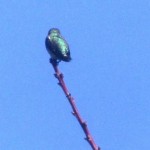
A hummer’s iridescent feathers shimmer as it perches in sunlight at the end of an apricot tree branch
I hang feeders and fill them with various types of seed and suet cakes as well as syrup for hummingbirds. Food attracts local and migratory birds flying through this time of year. It’s best to choose a wide sampling of foods such as seeds, nuts,hulled sunflower, safflower, Nyjer thistle, peanut, millet, fruit, berries, raisins, and meal worms to draw interesting bird traffic.
Some of the birds we regularly see include scrub jays, wrens, finches, sparrows, red-tail hawks, mockingbirds, quail, mourning doves, robins, barn owls, hummingbirds, and crows.
With food scarce in the wild, the birds visit the hanging and platform feeders. For ground feeders like mourning doves, I put out a large saucer under the apple tree and, yes, I leave a few apples on the tree for the birds to peck. For a list of birds and the types of seed and other foods they consume, see, https://www.wild-bird-watching.com/Bird_Seed.html
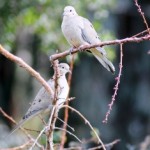
Mourning doves mate for life; these two are joined at the feeder by a third who has lost his or her partner
Some of our winged visitors stick around to mate and build nests in climbing rose bushes, brush piles, trees, or one of the many birdhouses we’ve hung. Only the owl basket high in the pepper tree remains empty, but we’ve heard a lot of hooting at night so we’re optimistic that owls will take up residence here. We live close to designated agricultural lands and the empty field behind us has a lot of mice–their favorite food.

My hubby built this birdhouse from a fence board. Not all birds will take up residence in a house, but many will.
Birds build nests in backyard birdhouses and brush piles as well as in trees, shrubs like climbing roses, and under the protected eaves of buildings (mourning doves especially seem to like these). Hummingbirds will build their tiny cup-like nests in shrubs (we found one in our Cecil Brunner climbing rose bush) and trees, from 10 feet and up in locations where wind isn’t a threat.
A water source is important for attracting birds since they both drink and bathe in the water fountains and bird baths of backyards and gardens.
If you provide food, water, and a safe and dry shelter for the birds to eat, breed, and nest, you will be rewarded for not only the singing birds will come but other interesting species as well.
_______________________________________________________
If you enjoy reading about living close to the earth and a good yarn, check out my Henny Penny Farmette series of cozy mysteries: A BEELINE TO MURDER, THE MURDER OF A QUEEN BEE, and my latest, A HIVE OF HOMICIDES.
These mysteries are chock-full of tips for keeping chickens and bees, growing heirloom fruits and vegetables, and backyard DIY projects. For more information, click on the URL.
A HIVE OF HOMICIDES
Rainy Day Treat–Tea and Cake
The storms have been steadily sweeping over the farmette, thanks to the El Nino effect. And on rainy days, I like to ride out the battering rain and blustery winds with indoor work. Invariably, a tea break calls for cake.
I’m particularly fond of apple cake and this recipe adds a cream cheese layer which makes the cake super moist. The praline frosting with toasted pecans partners perfectly with the apples and spices.
William Tell’s Never Miss Apple Cake
Ingredients (for the cream cheese layer):
1 8-ounce package of cream cheese, softened
1/4 cup granulated sugar
1 egg
Ingredients (for the cake)
1 ¾ cups sugar
1 cup canola oil
3 large eggs
2 cups all-purpose flour
2 teaspoons baking powder
2 teaspoons ground cinnamon
1 teaspoon Kosher salt
¼ teaspoon baking soda
2 cups peeled, cored, and chopped Granny Smith apples
1 cup shredded carrots
½ cup chopped pecans, toasted
Ingredients (for the icing):
½ cup packed brown sugar
¼ cup butter, cubed
2 tablespoons whole milk
½ cup confectioner’s sugar
½ teaspoon vanilla extract
¼ cup chopped pecans, toasted
Directions for the prep:
1. Preheat oven to 350 degrees Fahrenheit.
2. Grease and flour a 10-in. fluted tube pan.
3. In a small bowl, cream together the cream cheese and sugar until smooth and then beat in egg.
Directions to make the cake:
1. Fit the large bowl to an electric mixer.
2. Add to the bowl the sugar, oil and eggs and beat to blend well.
3. In another large bowl, whisk together the flour, baking powder, cinnamon, salt and baking soda.
4. Add gradually the flour-and-spice mixture to the sugar-oil mixture.
5. Stir in apples, carrots and toasted pecans.
6. Pour one-half of the batter into the prepared pan.
7. Pour the cream cheese mixture on top of the batter and spread it evenly into a layer.
8. Add the remaining batter to the cream cheese layer.
9. Bake 60 minutes or until a toothpick inserted in cake portion comes out clean.
10. Cool cool completely before inverting the fluted pan to remove the cake.
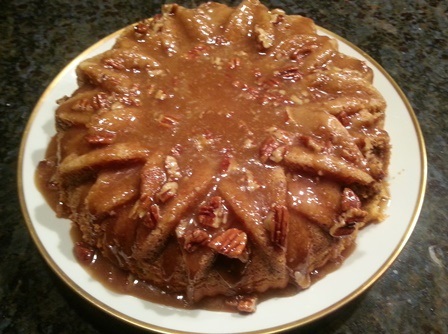
The praline icing drizzled over the top tastes great but diminishes the contours of the sunflower petals
Directions to make the praline icing:
1. Combine brown sugar, butter and milk in a large saucepan and bring to a boil.
2. Boil the mixture, stirring constantly, for 1 minute and then remove the pan from heat.
3. Use a whisk to combine confectioners’ sugar with vanilla until smooth.
4. Drizzle the frosting over the cake.
5. Sprinkle with toasted pecans.
Serves: 12
For more delicious farmette recipes, folksy sayings, farming tips, and a cozy mystery, check out A BEELINE TO MURDER and the forthcoming THE MURDER OF A QUEEN BEE (Kensington Publishing), available on Amazon, BarnesandNoble.com and other online and traditional bookstores everywhere.
Drying Fruits Naturally
I love dried apricots, but don’t tolerate well the ones treated with sulfur dioxide(used to prevent oxidation and loss of color). With so many apricots on our property coming ripe at once, I have decided in addition to making jam this year to also dry some of the fruit.
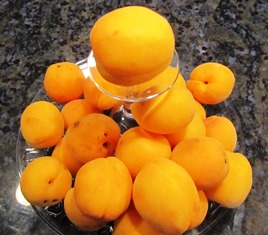
Apricots, so plentiful this time of year, are easy to dry and make great snacks when the season is over
Apricots dried but not treated with sulfur dioxide will turn a natural brown color. Some stores sell them this way. They are usually priced the same or similar to the treated apricots with the bright orange hue.
Besides apricots, other fruits that dry well include apples, bananas, cherries, grapes, nectarines, peaches, pears, plum, rhubarb, and even strawberries. You can use a drying machine
Quick Tips for Drying Fruit
1. Choose to dry only the freshest picked fruits, without bruises, scale, sun scald, or other blight.
2. Spray nonstick vegetable spray on drying pans or trays to make it easier to remove the dried fruit
3. Lay out the fruit to dry in a single layer on trays. Remember to rotate the trays occasionally and turn the pieces from time to time.
4. Destroy any insects (miniscule or otherwise) by freezing or baking the fruit. Simply take the tray and stick it into an oven heated to 175 degrees Fahrenheit for about 15 minutes. Alternatively, pack the dried fruit in freezer bags and freeze for at least 2 days.
5. Freezing dried fruit in resealable freezer bags will preserve its shelf life.
Early Bird Tips for Bare-root Fruit Trees
Gardeners understand that appearances can be deceiving. For example, during bare-root season (starting now in the Bay Area), twiggy fruit trees with no leaves are becoming plentiful offerings in local nurseries.
Bare-root trees are so-called because their roots are bare and packed in moist sawdust inside a burlap wrap. This makes it easy for the gardener to estimate the size of the planting hole (make the hole twice as deep and wide as the tree’s roots).
Plant two or three bare-root trees (select those that will pollinate each other for best results) in a single hole if space is a consideration. This is called high-density planting.
Consider a multi-grafted tree if you desire several types of fruit. Because the grafted trees use a basic tree and graft on scions of other varieties (often the same type of fruit such as apples), some branches will blossom and leaf out before others.
Another space saver in the garden is the espaliered tree. Choose a sunny place against a trellis, fence, or wall to train your tree, using wires for support. You will be directing its limbs to grow in a horizontal pattern.
All plants need water and food. During the winter, you may need very little water but in spring and summer check the soil often and when it’s dry down two inches, be sure and water your plant.
Fertilize your trees three times each year: after blossoming, after fruiting, and in the fall.
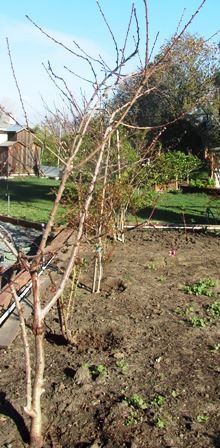
Planted in a row along a gravel path is a peach, a tea rose bush, an apricot, and a pomegranate tree
Prune your fruit trees in early winter, when the tree is dormant. With these early bird tips, your bare-root trees will get off to a great start.
Blooms over the Garden Gate
The nectarine trees are susceptible to Peach Leaf Curl and usually, I try to spray them three times before the next year’s blooms. Alas, this year, I didn’t complete the task before the tree broke bud.
Elsewhere, the almonds, apricots, and apples are blooming. So are some of the roses–Lady Banks, for example. Also, Fiesta and the beautiful Iceberg rose in the front of our house.
My neighbor’s two almond trees are covered in blooms of white blossoms. Last Friday, when I contacted a local beekeeper business, I was told they were closed to move their hives of bees out to pollinate the almond orchards. Farmers pay the beekeepers for “renting” those hives of industrious little bees for the job of pollinating their crops.
This is supposedly “bare root” season, but the warm weather coupled with the rain we had in December seems to have brought us an early spring. If you look over my garden gate, you will see signs of it everywhere.
Time to Open the Hives, Check on the Bees
My honeybees have become surprisingly active for the dead of winter. Local forecasters tell us that the Bay Area temperatures may reach 80 degrees Fahrenheit by the end of the week. My apple and early peaches won’t wait; they’ve already blossomed.
The warm weather, time of year together with the fact that almond trees will be blooming in a couple of weeks and the lavender around my farmette is already blooming tells me I have to open the hives. My beekeeper neighbor says that his bees are already out collecting pollen–lots of it–and that means we have to get to work.
The hives have to be checked now for mold (that long period of hard rain in December caused some of my neighbor’s frames to mold). Moldy frames can’t be renewed; they have to be tossed. Honeybees can get nosema (with diarrhea), which shows up as spots at the base of the hive.
The bees are finding flowers on their forage runs and are returning to the hive laden with pollen.
Bee queens will be busy laying eggs in the coming weeks, if they aren’t already. This is the time for beekeepers to purchase new queens. By the first week in April, it’s possible we could see swarming.
So here’s the plan. If the hives have a lot of honey, I’ll harvest some. Strange to be doing that in winter, but the hive will need space for brood. I’ll have to remove frames of honey and insert empty frames with wax (put in the freezer first for a period to kill any pest they might be harboring over).
I’ll put bee food patties in the open hives, so they’ll have plenty to eat (once I take some of their honey). My beekeeper neighbor tells me this will get the hive “heated up” for the queen to do what she does best–lay the eggs.
With so much activity, I’m confident that everything will turn out well, but you never know until you’ve inspected the interior of the hive and checked out everything, including the possibility of mold or the presence of pests or illness.
Mother Nature didn’t ask me, but I would have preferred she wait another month before removing her winter robes and dressing in spring florals. It just seems like now everything to do with the hives is on fast forward!
Spate of Warm Weather Brings Out Early Blosssoms
While schools across the nation are taking snow days because of frigid temperatures, the fruit trees on my Bay Area farmette are showing signs of bud swelling and early blossoming because of a winter heat wave.
Cities around the San Francisco Bay are experiencing early January temperatures of 70-plus degrees Fahrenheit, breaking weather records in some areas. Mother Nature certainly behaves strangely at times.
My five-variety apple tree and the early Desert Gold peach trees are covered with buds that are already showing color. I haven’t as yet gotten around to the winter pruning and spraying with organic oil. Maybe if there’s no wind today, I’ll squeeze that chore in with the others.
I did cut back the Washington navel orange that is infected with Leaf Miner, a pest that’s crossed the United States from Florida. It attacks new leaves, so I’m thinking if I prune and spray now before spring is in full swing, maybe I won’t lose this tree. Curiously, the pest hasn’t widely infected my blood orange trees but there are signs of it in the leaves of our Satsuma seedless tangerines.
Elsewhere, I’ve done deep digging in the chicken run and added some wood chips and leaf material for compost.
The tea roses have been pruned back to 12 to 18 inches and old canes removed. I’m torn between wanting to add more roses in the beds in front of the bamboo plants on the east/west axis of our property or adding more lavender and sunflowers, favored by the bees.
Tomorrow, I’ll open and inspect my bee hives. I left honey stores this past autumn instead of harvesting. But if the bees have gone through all the honey, then I’ll have to add bee food until we get the first early bulb blooms and wildflowers. The French perfume lavender that the bees love is about the only bloom (bee food) in the garden now. Luckily, I planted a lot of it.
The farm chores don’t just seem endless, they are. But whether the work is daily, weekly, or seasonal, there’s something deeply rewarding–even magical–about living close to the earth in harmony with cycles of seasons and the rhythms of nature. But I admit, it is a little strange to have such warm weather when winter has only just started.
Divine Desserts and Holiday Cheer
We decorated festive holiday baskets for family and friends this year, filling them with tangerines and oranges from our trees, juicy apples, jars of summer fruit jams, and honey. Of course, no holiday basket would be complete without a batch of homemade fudge, some sugar cookies, and bottle of apple cider or a favorite cordial.
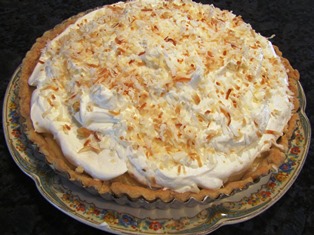
The coconut cream pie piled high with whipped cream and toasted coconut is always a hit for a Christmas dessert
Some of our baskets were delivered on Christmas Eve; others we took with us to a family gathering on Christmas day. I’ve been told that the baskets are much appreciated, more so, since they include homemade treats made with love.
Christmas Eve day my son and I spent most of the day in the kitchen, baking and decorating the cookies, toasting coconut for the pie, and assembling the trifle for our Christmas day dinner.
The trifle bowl went missing this year (we think it was mistakenly taken home by someone after our Thanksgiving feast). But it didn’t really matter since we could make the trifle and put it in any glass bowl that might be deep enough to hold the layers of pound cake and seven cups of various fruits and berries.
We didn’t cook the Christmas dinner this year–my daughter did. But we supplied some a few desserts and a lot of Christmas cheer. Some might say we were blessed with beautiful weather (hovering close to 70 degrees Fahrenheit), but I’d say it’s a mixed blessing–those high, firm peaks of whipped cream in on the trifle and pies will surely soften and sag during transport. But the desserts will still taste divine.
 Facebook
Facebook Goodreads
Goodreads LinkedIn
LinkedIn Meera Lester
Meera Lester Twitter
Twitter



